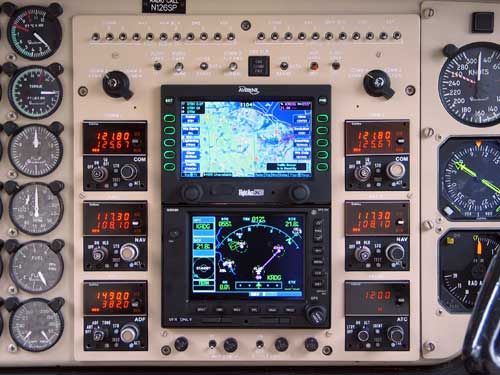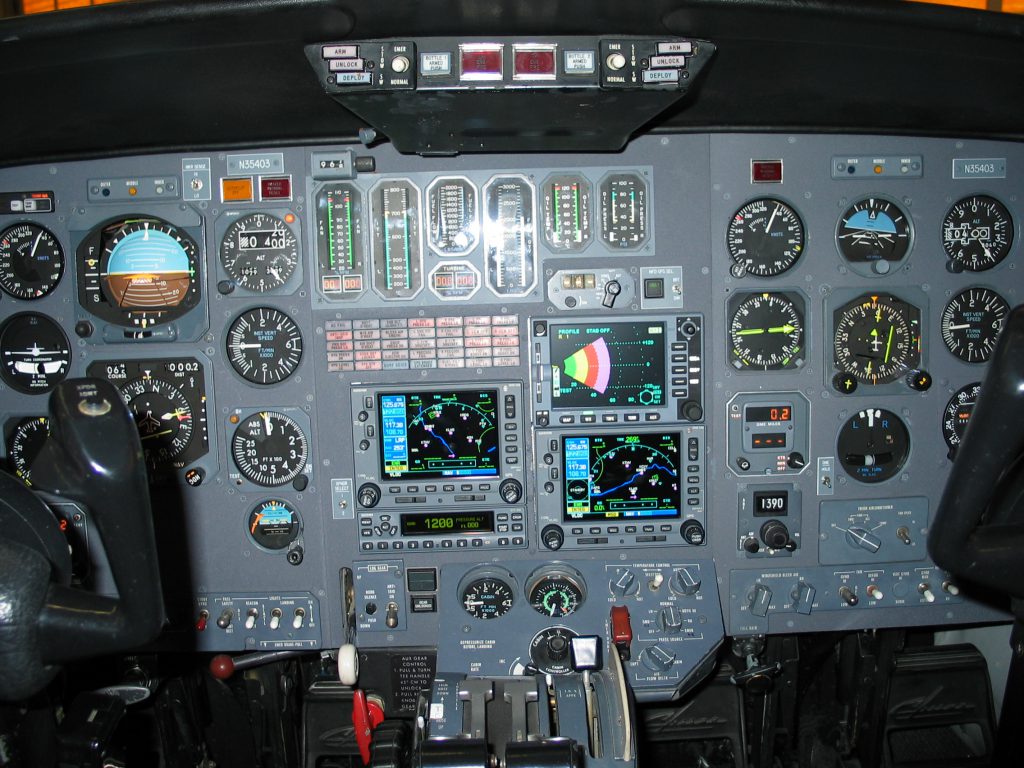Choosing a ‘Glass Panel’
There are many reasons one can come up with to start a discussion related to Glass Panels that may include a desire to eliminate a vacuum pump, to replace an older and more obsolete system to avoid throwing good money after bad, to gain functionality, and many others. Before we get into choices, let’s start with defining the two classes of ‘Glass Panels’.
The two classes are Electronic Displays and Electronic Flight Information Systems (EFIS).

Electronic Displays (ED): This is a relatively new category created to provide Part 23 aircraft with options to replace older analog instruments in favor of electronic functionality and capability. Such systems can provide a path to vacuum pump removals, increased options for autopilot integration and/or replacement, and a lower cost alternative to EFIS type displays.
Electronic Flight Information Systems (EFIS): EFIS has been around a long time and the Rules and Regulations regarding these systems have changed very little over time. EFIS used to be a thing for only the Corporate World but lower cost solutions evolved to cover the true General Aviation Community. Make no mistake about it, they are expensive and Electronic Displays, but they generally offer increased integration options (especially to older autopilot systems) and ancillary options such as Synthetic Vision, Altitude Preselect, Display of weather and traffic data, and Angle of Attack. It should also be noted that ‘Back-Up’ instrumentation is required for all EFIS systems making things like removal of a vacuum pump more difficult to achieve. There is a second part to this category call Integrated Flight Deck Systems. They too are EFIS type systems but are generally all-encompassing systems (Displays, radios, and
Autopilot).

Electronic Display vs. EFIS
Cost – As pointed out, EFIS systems generally cost more than Electronic Displays. To me, everything comes down to 4 things:
- Type of aircraft – What is it capable of with respect to type of flight?
- Pilot Ratings – Under what conditions are you rated to fly?
- Pilot Limitations – Though you may be rated to so more, do you have personal limitations that you impose on yourself that limits the kind of flying you do?
- Mission with the Aircraft – What are you using the aircraft for? How many hours do you fly in a year? What are the conditions for which you find yourself flying?
All of these things, and more, are worth considering when deciding between ED or EFIS systems and also holds true for any other equipage choices you may be considering. How your aircraft ultimately gets equipped should be directly proportional to the type of flying you do which translates into the cost of equipage being be higher if your mission dictates the need for more capability.
Display – Electronic Displays generally are smaller in size (typically the size of a standard instrument) as compared to EFIS systems that range from the size of two standard instruments on up to a size that consumes the entire Pilot panel. Size and resolution can matter if for no other reason than your eyes are not as good as they used to be.
Integration – As a general rule, EFIS type systems have a much higher probability of integrating with higher number of primary and secondary systems including autopilots. Depending on ‘other’ existing equipment, you may be left with little choice of going to an EFIS type display or having to take the next step of changing other equipment to accommodate an ED type display. Whereas you can mix-and-match components of your radio stack pretty much as you wish, there is potentially a very strong connection between your Glass Panel of choice and your autopilot and/or autopilot of the future. This becomes a very important part of your decision-making processes because the Glass Panel you choose can, more or less, limit your choices with respect to a future autopilot or other system and vice versa.
Capabilities/Features – There is no question that ED’s are limited in capabilities compared to EFIS systems but that can be OK. If the mission for your aircraft does not warrant the expense associated with EFIS systems then so be it. The most important thing, as part of this process, is to understand what you potentially could have with an EFIS system in order to be able to decide how important these things are. The following is a list of things that an EFIS will typically provide that an ED system will not:
- Airdata source for external use: This information can, in many cases provide data to a GPS to populated fields that are otherwise only Pilot entered calculation fields including Heading, Altitude, OAT, Airspeed, and many others. This data can be used in place of an altitude encoder for your transponder.
- ‘Enhanced’ GPS Roll Steering (GPSS): Because of the Airdata source listed above, your GPS can be fed Wind Direction and Wind Speed data which it can use to enhanced the GPSS data being sent to your autopilot. The best example I can provide to explain the difference between conventional GPSS and Enhanced GPSS is this….Let’s say you program a Hold into your GPS and it is a windy day. As your autopilot attempts to keep you on the ‘race track’, the wind direction and speed changes (relative to your aircraft). Conventional GPSS has a difficult time adjusting for this as compared to having Wind Direction and Speed factored into the equation with Enhanced GPSS.
- Altitude Preselect: Assuming you have a comparable autopilot, most EFIS systems can provide a path for this feature.
- Flight Director: Assuming you have a comparable autopilot, most EFIS systems can provide a path for this feature.
- Synthetic Vision: Airdata and terrain database information are required for this feature therefore this feature can typically only be found in EFIS type systems.
- Hazard Awareness Interface: EFIS systems will generally provide an option to display things like Stormscope, Datalink Weather, and Traffic whereas ED systems do not.
- Attitude Interface: This can be a necessity depending on the on the current Autopilot system in your aircraft. Most if not all ED’s cannot perform this function unless pair with a new autopilot of a specific kind.
Back-Up Instrument Requirement – All EFIS systems require back-up instruments making vacuum pump removals more costly and difficult mostly due to the requirement for a back-up Attitude Indicator. It’s not impossible but does add another layer to the cost. The good news is that products like the G5, GI275, MD302, and Aspen products may now satisfy such a requirement.
In closing, the only potential bad choice is a choice that is made without foresight into the future. It is highly recommended that you seek advice regarding this choice from an Avionics Shop that understands the nuisances associated with these choices as your choice today can impact your choices tomorrow.